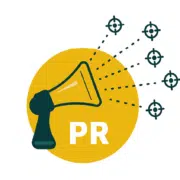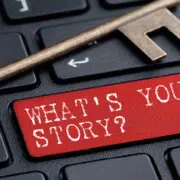Public Relations Myths and the Real Strategies Behind Them
When I started at Chartwell Agency, I had no experience working for a public relations and marketing agency. My knowledge of public relations came from television with limited exposure at work. This created some preconceptions of what public relations is and how it works. Now, after several years working in this industry, I know there are a few myths about public relations out there.
Here are some top public relations myths and the real strategies behind them.
Public Relations Myth #1: PR firms just send out press releases
Press releases are an important way to share big announcements or new information but you can’t just hit send and expect coverage. News organizations receive many press releases every day for topics to cover. The first step to engage the media is to create an up-to-date media list centered around the desired audience for the announcement, whether it is regional or based in industry.
After the announcement goes out, the real work begins. Not only do you have to send out the announcement, but you must follow up (via both phone and email). You must convince them your story is worth sharing by coordinating follow-up interviews, statements and sharing why it’s worth their time.
Bonus Tip: Create angles to go with your press releases to show its value right away.
Public Relations Myth #2: You can get me on the Today Show, right?
Everyone wants to be featured in the best publications and TV news programs but these organizations are the top for a reason. Their contributors are established thought leaders who have already proven their value. This doesn’t happen overnight. Becoming a thought leader means getting quoted in other media, writing informative pieces that get shared and helping others see your value. It’s all about building your credibility and that takes time and effort.
As you build your credibility, it’s also about figuring your unique angle. Why are you the expert over so many others? A unique story or angle about a topic helps news organizations stand out from others sharing the same news and they’ll be more likely to want to feature you.
Bonus Tip: Follow reporters that you are pitching on social media to start building relationships. Share their articles on your social networks to help their reach.
Public Relations Myth #3: We only need PR during a crisis
We’ve all seen television shows where there is a scandal and the PR department is called in to make it “go away.” In reality, you can’t sweep a scandal under the rug. The speed that news travels today is lightning fast, especially with social media. The best defense is to prepare in advance for any crisis that might happen and involve your communications team in the planning before there is an emergency. While organizations cannot plan for every crisis, taking the time to plan who will be speaking and how information will be disseminated will help your organization respond faster. This will help ensure the right information is being shared in a timely manner.
The worst thing an organization can do is either say no comment or nothing at all. You cannot tell people how to feel but you can ensure that the facts are being shared. If you’re not telling the facts, someone else will fill in the blanks for you.
Bonus Tip: Include your public relations steps in your emergency plans so everyone knows who will be handling the press in a crisis.
Public Relations Myth #4: PR doesn’t make us money
People can’t buy things directly from a TV news story, so why do we need PR? Following the rule of 7, you have to interact with a customer at least seven times before they make a purchase. Sharing your story on the evening news or in a publication is just one of the many ways you can reach your audiences and connect with them.
Being featured on the news and in publications also is another way to enhance your brand with positive stories and establish yourself as a thought-leader. This is the perfect opportunity to share what makes your organization unique and why people should buy your product or consider your service. A customer may remember your expertise the next time they are purchasing what you are offering.
Bonus Tip: Being featured by third parties enhances your credibility, making you appear more trustworthy.
A successful public relations strategy takes a lot of time and work. When done successfully, it may appear that it took no effort at all. Consider how public relations figures in your year-long strategies so you can help grow your brand, ensure your news is shared, reach your audiences, and be better prepared to handle a crisis. If you need assistance with any of these, Chartwell can help.








